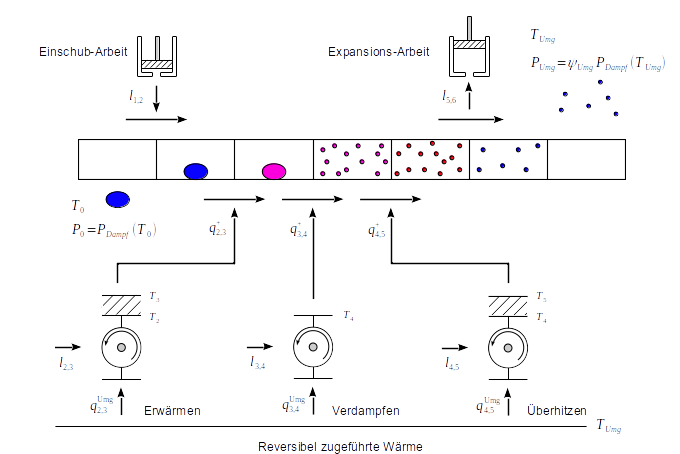Menu
Entropy-Engine
- July 5, 2021
Entropy engine
We find a multitude of independently running processes that are accompanied by an increase in entropy. Examples are temperature equalization, mixing, evaporation, etc. Such processes can be viewed as sources of entropy.
The basic idea for an entropy engine is to use these entropy sources as a kind of "driving force" and thus to transform a certain proportion of ambient heat into exergy in a (semi-) reversible process, which is then used for any energy services (movement, light, heating etc).
In contrast to heat engines, driven by a working substance as an energy supplier, in this case the heat of the environment represents the actual energy source. The potential of entropy generation acts as a stimulus to drive this process.
It is important to emphasize that the exergy potential of the "working substance" cannot be specified per se, but only in relation to the state of the environment. A necessary condition for an existing exergy potential of the working material is, however, that it is not in thermodynamic equilibrium with the environment, i.e. there is an "entropy pressure" that stimulates the development of the system towards equilibrium.
The idea of a water engine

To be continued ...
